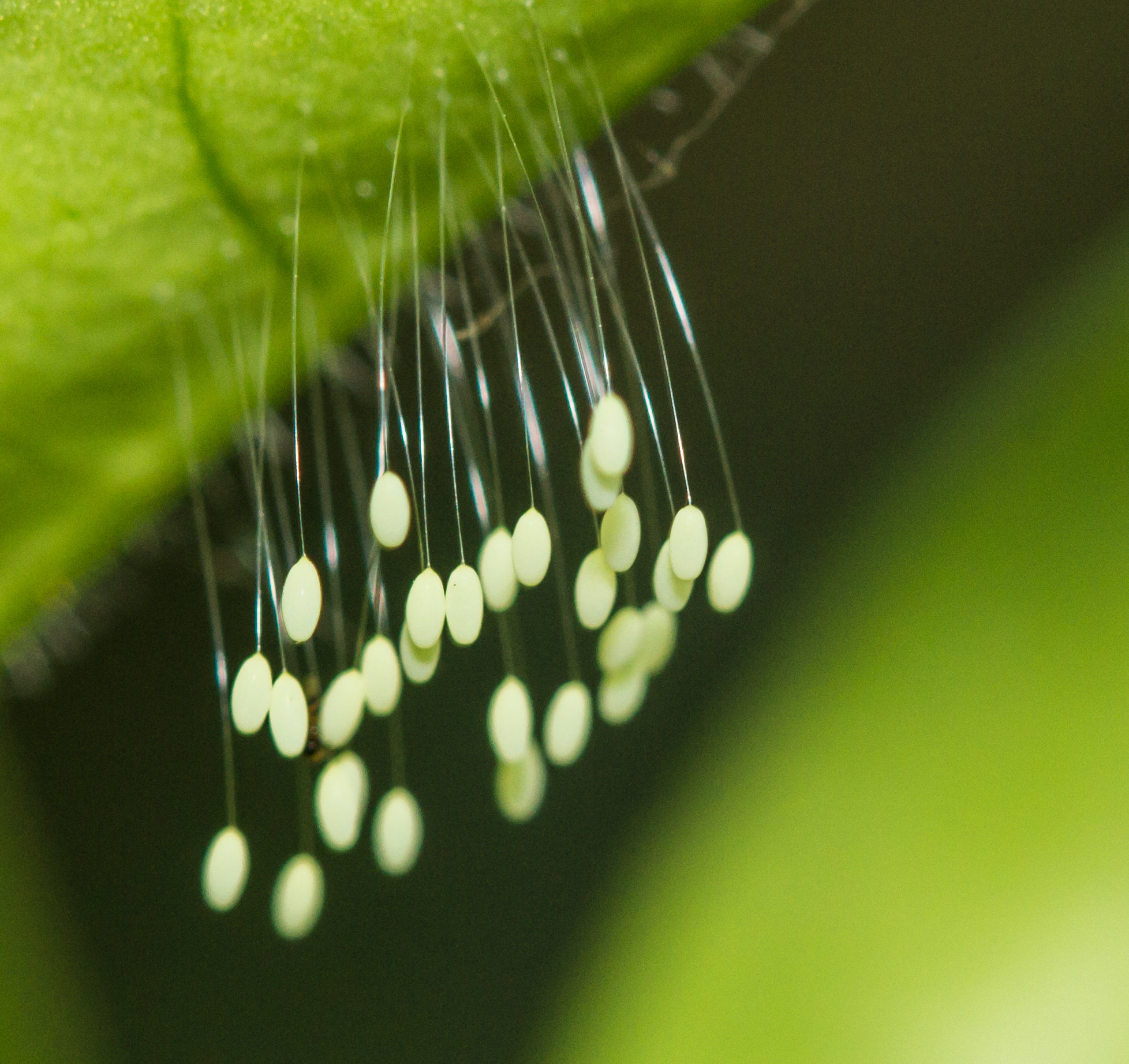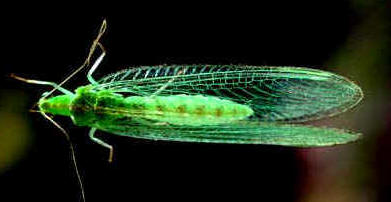
Lacewings Eggs
Lacewings are insects with wings, extremely common, we have all seen them in the garden throughout the summer months. They have long slender bodies with are around 2cm in length and have a 4cm wing span. They have bright green bodies on most of the 18 species, some are brown, they all have transparent fairy wings with delicate lime green veins running through them. Really quite beautiful insects, but are they a garden pest? or a garden pet?
The Lacewings Life Cycle
They have a simple lifecycle, the adult lacewing with lay its eggs in early spring, usually March, on the underside of a leaf. They are tiny cigar shaped, white / green eggs, which are suspended by a type of umbilical cord, they can be laid singular or grouped together or clustered. They will take a couple of days to harden and then to hatch into a larvae, imaged below. The Larvae will then feed and feed and when they are well fed they will pupate themselves into a silk ball on the underside of the leaf. After two weeks it will hatch into the Lacewing. The adult Lacewing will hibinate throughout the winter, very few will survive, the ones that do, emerge in early spring and start the process over.



